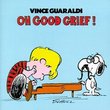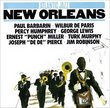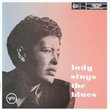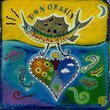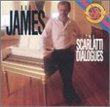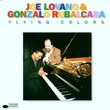| All Artists: Paul Butterfield Title: East West Live Members Wishing: 1 Total Copies: 0 Label: Winner Records Original Release Date: 9/3/1996 Re-Release Date: 11/14/1996 Album Type: Live Genres: Blues, Pop, Rock, Classic Rock Styles: Chicago Blues, Electric Blues, Modern Blues, Harmonica Blues, Blues Rock, Psychedelic Rock Number of Discs: 1 SwapaCD Credits: 1 UPCs: 008128044722, 008128044746 |
Search - Paul Butterfield :: East West Live
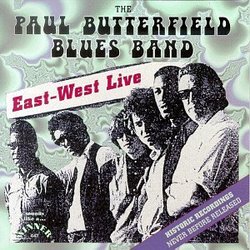 | Paul Butterfield East West Live Genres: Blues, Pop, Rock, Classic Rock
|
Larger Image |
CD DetailsSimilar CDs
Similarly Requested CDs
|
CD ReviewsA Wonderful Document of an Influential and Underrated Band Francis Flannery | 02/09/2001 (5 out of 5 stars) "If you are thinking about purchasing this album, it is worth noting that a CD with three extended live versions of the same song is most likely going to appeal to the devoted fan. That fan will, most likely, already own the album which contains the studio version of "East-West," a raga- and samba- infused instrumental featured on this disc in three successively longer and more experimental live versions from 1966 and 1967. That fan may, depending on their outlook towards the historical value of this particular recording, be able to overlook the sometimes-distorted (but almost always listenable) mono sound quality of this disc. In spite of the crude sound quality, this is a wonderful disc. Tracing the stylistic development of the tune "East-West" (the title tune from the second released Paul Butterfield album), this CD documents a pivotal moment in the development of late '60's rock. Around the time these performances were recorded, the Paul Butterfield Blues Band frequently shared concert bills with the Byrds. Much of the Byrds' highly influential 'raga-rock' from ca. 1966 (especially "Eight Miles High") is more than a little indebted to "East-West". The PBBB's instrumental virtuosity and eclectic fusion of disparate musical genres also had a profound influence on Carlos Santana and the Grateful Dead. If the PBBB can be accused of "noodling" through parts of these performances, that is at least somewhat an accusation born out of three decades of indulgence by the countless jam bands that have followed in the wake of the PBBB, who so often aspire to this level of ambition without possessing an equal level of skill. Also, the reviewer who mentions that the PBBB likely played better versions of this tune in the early '70's ought to check his facts. PBBB Keyboardist Mark Naftalin (who recorded the performances included on this CD) states in the Michael Bloomfield biography "If You Love These Blues" that the band never performed "East-West" after Bloomfield left the group in 1967. Given the intensity of the performances on this CD, and the integral role that Bloomfield (the tune's composer) played in these performances, it is not hard to imagine why that is the case. Bloomfield, a truly underrated guitarist, gives searing, passionate performances here (especially on track #3) that rival anything coming out of the amplifiers of Clapton or Hendrix from the same era." A RARE, RARE DOCUMENT OF A GREAT SONG DaddyGuy | Redwood City, Ca USA | 12/16/2003 (5 out of 5 stars) "Sure the sound quality is not the greatest. OK, I admit it. Recorded on portable tape recorders in 1966-67.........what would you expect? But if you can get past that, this is a great, rare chance to hear how East/West developed onstage - three great versions taped by a band member over about a one year period. An incredible document of a songs growth - played live - you shouldn't expect the song to sound exactly like the studio version recorded about a year earlier. That is the beauty of this CD - it shows the development of a great tune, from a 12 minute version, to a 16 min. version, to the best part, the 28 minute blowout version. Wow!! This third version is worth the price alone....but all versions are great. If you like the song from the album, this is certainly a real treat. It's historic importance cannot be denied. The songs influence is incredible!!!! I guess you can tell I like it.....alot!!!! Brings back memories of my younger days.........this WAS a groundbreaking song for the times!" Perfectly shows the growth of a brilliant musical idea Worgelm | United States | 02/18/2002 (4 out of 5 stars) "(4-1/2 stars) What's really cool about this disc, that others have commented on, is how well it shows the development of this group of musicians around a particular idea that from all accounts of the time, was utterly groundbreaking and historically important. On the first version, its Bloomfield's wicked chops that really grab your attention, but you get the idea that the rest of the band just hasn't quite picked up the right vocabulary yet. Version 2 has much more impressive soloing from Bishop, and some nice interplay between the two guitarists. We get to hear a little more of Butterfield, but its track #3 where we finally see the synthesis fully realized. On this, there's not a single member of the band that doesn't stun you, from the apocalyptic guitars, to the solid, groovy jazz drum-riffing, and especially Butterfield's wonderful, textural harmonica touches - its worth paying twice the cost of this CD just to hear the intensity of this final performance. Its an absorbing listen, but be warned that undoubtedly curious neophytes might be turned off by the somewhat muddy bootleg-like sound and jam-oriented aspect of the disc. Nevertheless, the strength of the performances coupled with its historic significance makes it a joy to behold."
|

 Track Listings (3) - Disc #1
Track Listings (3) - Disc #1
